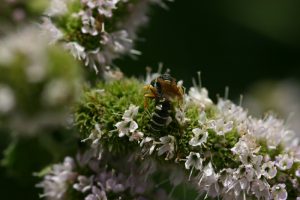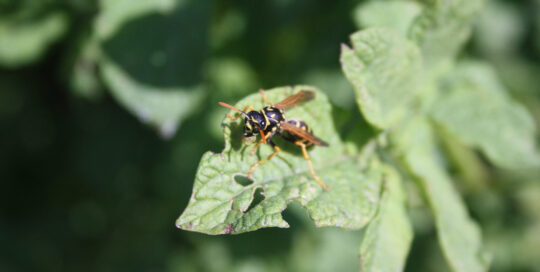Be Proactive About Bees
Views: 4954

Today our oldest son told me, “The only thing I don’t like about summer is the bees.”
He’s right. We have absolutely gorgeous weather, but no matter where you are—in the garden, on the porch, reading on a blanket in the back yard—the hornets and yellow jackets are terribly bothersome.
When he was stung by a yellowjacket a couple of years ago, the neighbors probably thought he stepped in a pool of acid. Let’s just say there was much wailing and gnashing of teeth. But it was something he never forgot, and unfortunately, he doesn’t want to be outside when there are a lot of them. Since being outside is what we do, I have to be proactive about bees.
Large Populations of Bees
An early spring means early pests, and in reality, we’ve already had issues with wasps and hornets. We’ve had several in the house, and friends have contacted me about what to do about the wasps in their homes. It looks like it could be a troublesome year with these stinging insects, since the warmer weather and potentially longer season gives them more time to lay eggs (more bees).
The wasps, hornets, and yellowjackets you see now are the mated queens that were born last year. (Last year’s queen is dead.)
They overwintered in a protected place, and they are ready to start the new generation. Thankfully, they don’t seem to move very fast. I haven’t had a difficult time squishing them, but it’s still unnerving to find them in a window, or worse yet, on the carpet when you’re trying to do yoga.
Preventing Bees Indoors
Let’s just say I think I made up a new move. Maybe even levitated.
If you have bees in the house, chances are they nested in the eaves of the house last fall. While you really can’t do anything about it now, inspect your home this spring and seal up any areas where you find old nests or cracks and crevices. The wasps generally won’t use the old nest, but it’s a good way to spot your weak areas. You don’t want wasps in your attic at the end of the season because they will likely visit you in the house, just like they are this spring.
In an effort to stay ahead of a potentially burgeoning population, I’m going to set out the Rescue! W-H-Y (wasp, hornet, yellowjacket) traps as soon as this next snowstorm passes on Monday. I’ve used them for a couple of years, but have never set them out this early in the season. Since our weather has consistently been in the 60s, which is what they recommend, and it’s going to be there again within a few days, I want to capture as many queens as I can now to hopefully reduce the population.
In the Garden
A wasp or yellowjacket queen can produce well over a hundred (and sometimes over two-hundred depending on the season) offspring, so I don’t want to compete with potentially thousands when it comes to harvesting raspberries and other food from the garden.
I understand the wasps and hornets can be beneficial insects in the garden. (I’m still not so sure about the yellowjackets. They just seem mean.) But there has to be a happy medium. Hopefully, if I act now by eliminating some of the queens, we can have what we need in the garden without being overwhelmed by them in the fall.
Meet Amy Grisak
Amy is a freelance author and photographer in Great Falls, MT who specializes in gardening, foods, and sustainable agriculture. She provides information on every kind…
Amy's Recent Posts

Looking into the Crystal Ball for a Pest Report








